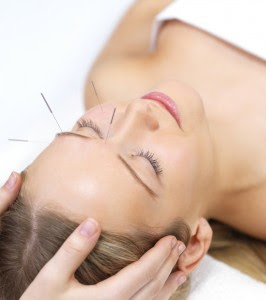Acupuncture is a traditional form of Chinese medicine that has been around for centuries. Today, western medicine is embracing some of the benefits of these ancient forms of medicine, and are slowly starting to recognize some of the benefits that non-traditional medicine can provide.
Acupuncture involves the insertion of very fine needles, often thinner than an individual strand of hair, into certain parts of the body to help relieve pain or treat specific conditions. Though long embraced by Asian culture as a viable form of treatment for many illnesses, traditional western culture has been slow to appreciate the benefits of acupuncture, but now that is changing. I have been seeing an acupuncturist for nearly 2 years now and was so impressed with the results that my husband also joined the bandwagon and has been seeing the same acupuncturist for nearly as long. His complaints were mainly back pain and sinus issues while mine were more stress related and adrenal/thyroid centered. Both of us have become firm believers in the benefits of acupuncture as an adjunct to traditional western medicine.
But like with any medical treatment, it's important to find an experienced and well trained practitioner. You'll want someone who is properly licensed and who is familiar with treating the types of conditions you are suffering from before agreeing to be treated by any acupuncturist. Many acupuncturists now specialize in senior care so you may want to look for someone treating those 55 years old and older. It's also extremely important to talk with your regular doctor to make sure that acupuncture won't interfere with any medications you are currently taking or pre-existing conditions you might have.
Below is a list of some of the diseases and conditions where acupuncture has been demonstrated to provide symptomatic relief:
Lower Back Pain
Tennis Elbow
Osteoarthritis
Fibromyalgia
Migraines
Post Operative Pain
Dental Pain
Chemotherapy Related Nausea or Vomiting
Posttraumatic Stress Disorder
Fatigue
Neuropathy
Hot Flashes
Even the Mayo Clinic and The National Institutes of Health have begun recognizing the health benefits of acupuncture when performed correctly by a licensed practitioner.
Here is an excerpt from the Mayo Clinic's website explaining the pros and cons of acupuncture:
Pros and cons
As with most medical therapies, acupuncture has both benefits and risks. Consider the benefits:
- Acupuncture is safe when performed properly.
- It has few side effects.
- It can be useful as a complement to other treatment methods.
- It's becoming more available in conventional medical settings.
- It helps control certain types of pain.
- It may be an alternative if you don't respond to or don't want to take pain medications.
Acupuncture may not be safe if you have a bleeding disorder or if you're taking blood thinners. The most common side effects of acupuncture are soreness, bleeding or bruising at the needle sites. Rarely, a needle may break or an internal organ might be injured. If needles are reused, infectious diseases may be accidentally transmitted. However, these risks are low in the hands of a competent, certified acupuncture practitioner.
If you think you could benefit from acupuncture then follow these simple steps:
1. Find a licensed acupuncturist in your area. You can visit the National Certification Commission for Acupuncture and Oriental Medicine's website HERE to find a practitioner in your area. Look for the "Find A Practitioner" tab on the upper right hand side of the page.
2. Be sure to ask you current doctor if acupuncture is right for you.
3. Get a recommendation from friends or family.
4. Be sure to tell your Acupuncturist if you have any existing medical conditions you may have and any medications you are taking.
Acupuncture is relatively painless and has many benefits so instead of suffering when conventional medical methods may have failed you, why not try something new, or something ancient as the case may be.










0 comments:
Post a Comment